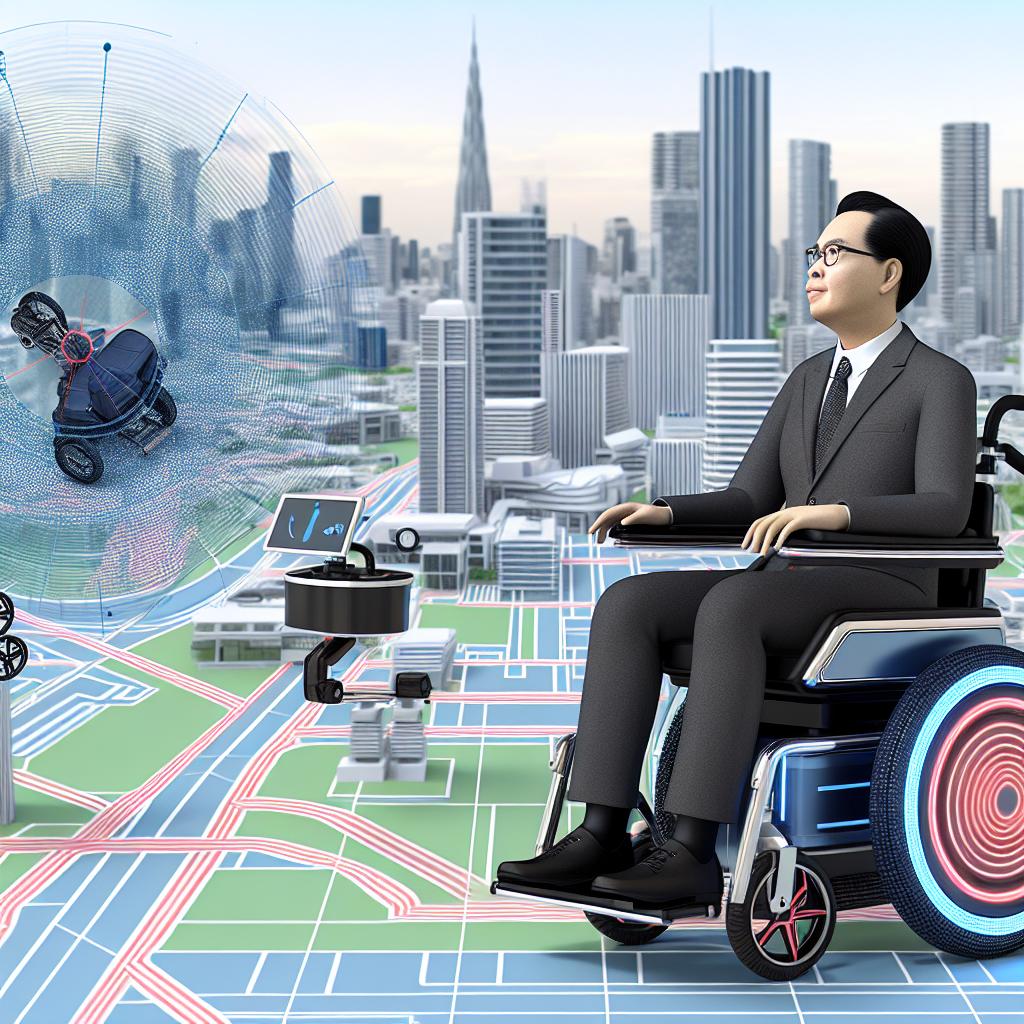Introduction to Autonomous Wheelchairs
The integration of advanced technology into mobility solutions has significantly enhanced the quality of life for individuals with limited mobility. Autonomous wheelchairs represent a promising innovation in this sector, offering enhanced independence and accessibility. These wheelchairs are designed to navigate environments with minimal human intervention, employing a range of sensors and algorithms to ensure safe travel. This overview delves into the various technological components that compose these wheelchairs, the benefits they offer, challenges they face, and the future prospects of this innovative technology.
Technological Components
The operation of autonomous wheelchairs relies on a complex interplay of various technologies. At their core, these technologies work together to enable seamless navigation and operation without the need for constant human oversight.
Sensors: Autonomous wheelchairs are equipped with a variety of sensors crucial to their operation. Among them, LiDAR (Light Detection and Ranging) is used extensively to measure distances by illuminating targets with laser light and measuring the reflection with a sensor. Cameras provide visual input that aids in detecting obstacles, interpreting signages, or understanding the layout of environments. Ultrasonic sensors, employing sound waves, are also integral for detecting nearby objects, making quick decisions to avoid potential clashes.
Navigation and Mapping: To navigate accurately, autonomous wheelchairs utilize sophisticated mapping technologies. Advanced algorithms help create virtual maps of the environment in real time. By constantly updating these maps, the wheelchairs are capable of traversing complex terrains smoothly and safely. The systems can interpret different types of surfaces and gradients, allowing for adaptive navigation strategies.
Control Systems: Control systems serve as the decision-making unit of autonomous wheelchairs. Drawing data from the sensors, these systems are tasked with executing navigation commands while adhering to parameters set for safety and efficiency. They ensure that the wheelchairs follow a path that avoids obstacles and accommodates dynamic changes in the environment, such as unexpected blockage or shifts in user destination.
Benefits of Autonomous Wheelchairs
Autonomous wheelchairs present several noteworthy benefits that underscore their potential impact on users’ lives, primarily revolving around augmented autonomy and safety.
Increased Independence: Perhaps the most significant advantage of autonomous wheelchairs is their ability to foster independence among users. By enabling users to move about freely within a given environment without necessitating constant assistance from a caregiver, these devices empower individuals, integrating them into society more fully and restoring a sense of self-reliance.
Safety Enhancements: Safety is a primary concern for individuals reliant on wheelchairs, and autonomous wheelchairs address this concern innovatively. By incorporating obstacle detection and comprehensive path planning, they significantly reduce the potential for accidents that could injure users or damage property. Advanced systems are capable of making split-second decisions to alter course if an obstruction is detected suddenly, thereby ensuring safer journeys.
Accessibility Improvements: Autonomous wheelchairs open up greater accessibility to a variety of environments that may have previously been challenging or inaccessible. This improvement extends beyond physical navigation into enhanced participation in social and professional spaces, providing users opportunities for greater engagement in activities they might otherwise be excluded from due to mobility limitations.
Current Challenges
Despite the promising benefits autonomous wheelchairs offer, several challenges must be addressed to realize their widespread adoption and practical utility.
Technological Limitations: While sensor systems have significantly advanced, the development of truly reliable and robust systems that can function flawlessly across diverse environments remains a complex challenge. Sensors must be able to handle diverse weather conditions, dynamic crowded environments, and perform equally well during night and day. The software systems need to be developed to quickly adapt to new environments without requiring extensive training or manual input.
Regulatory and Ethical Considerations: The deployment of autonomous wheelchairs raises essential regulatory and ethical considerations that must not be overlooked. Ensuring compliance with safety regulations involves rigorous testing and adherence to standards that protect users. Further, the ethical implications related to data privacy and security of the information collected by the sensors are paramount. Addressing these issues is critical in order to build user trust and societal acceptance of this technology.
The Future Outlook
The future of autonomous wheelchairs is laden with potential, driven by ongoing research and development endeavors that aim to enhance their capabilities and build on their existing strengths. Collaborations across interdisciplinary sectors, including technology companies, healthcare institutions, and regulatory bodies, are essential for addressing the challenges faced by this innovation. Such synergies are crucial in developing solutions that are not only technically viable but also socially acceptable and economically feasible.
As the technology evolves, we can anticipate autonomous wheelchairs that are more intuitive and capable of learning user preferences, potentially incorporating artificial intelligence to further enrich the user experience. Continued advancements are likely to lead to the creation of wheelchairs that are lighter, more energy-efficient, and less expensive, making them accessible to a broader range of users across various socioeconomic strata.
In conclusion, autonomous wheelchairs represent a significant technological advancement in mobility, providing increased independence and safety for users. While challenges remain, continued progress promises a future where mobility solutions are more inclusive and accessible. These innovations hold the key to not only improving individual lives but also transforming societal dynamics around mobility and access, redefining the landscape of assistive technology in the process.
The information detailed above outlines the promising trajectory of autonomous wheelchairs and provides a glimpse into how emerging technologies continue to reshape and redefine the parameters of mobility, offering transformative impacts for people with restricted mobility capabilities.
